Menu
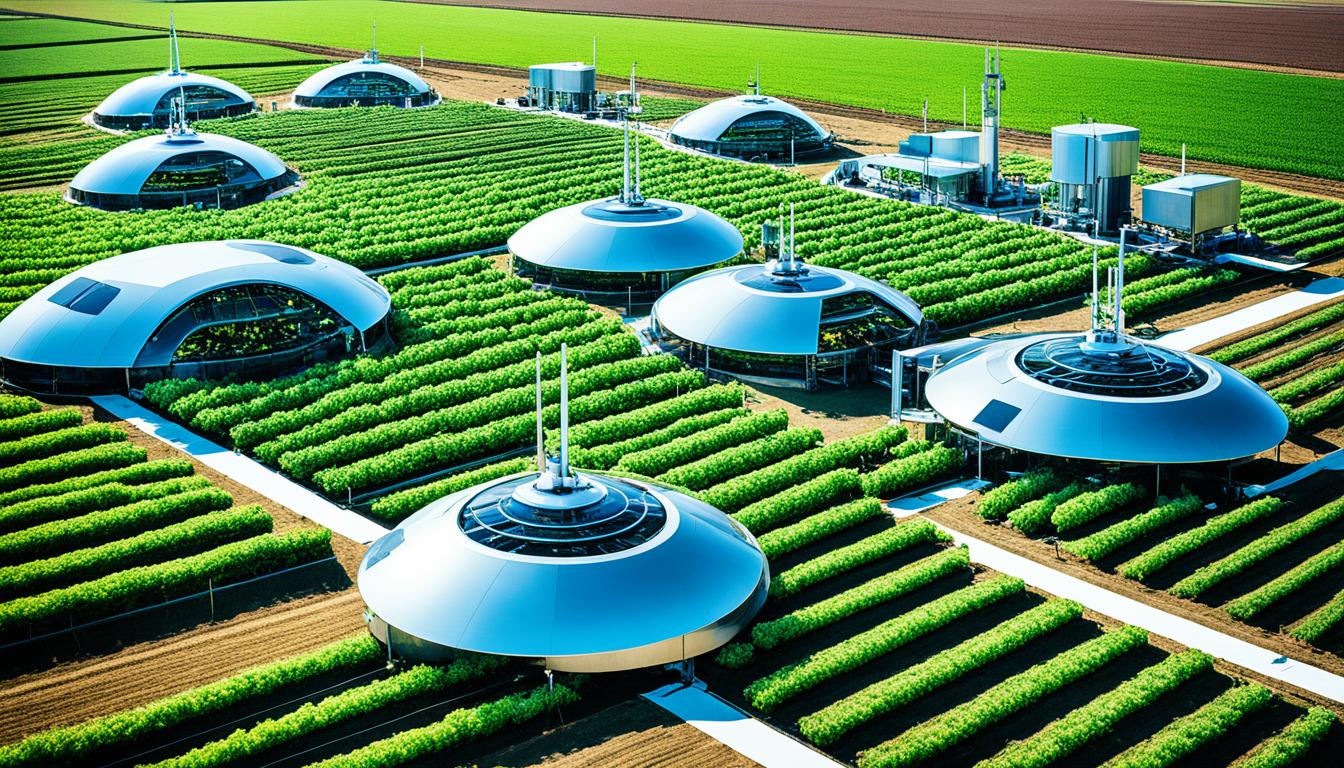
Did you know around 93% of soybeans planted in the U.S. in 2012 came from agricultural biotech? This stat shows how big of a role biotechnology already plays in farming. It’s changing how we look at food and farming practices every day. The focus is on making soybeans better, from boosting their protein to reducing allergens.
Biotechnology isn’t only improving crops; it’s tackling global nutrition problems. A major issue is that over two billion people lack essential nutrients. Biotech aims to fix this. This part will explore the latest in biotech for agriculture. We’ll look at today’s uses, future breakthroughs, and how they help farms stay sustainable.
Agricultural biotechnology is a fast-growing area that uses scientific methods to improve farming. It aims to make farming more productive and earth-friendly. This part gives a deep look into what *agricultural biotechnology* is all about. It covers its history and growth to today.
The *agricultural biotechnology definition* includes the use of science tools to change plants, animals, and tiny organisms. It has many goals such as making more food, better quality food, and using fewer harmful chemicals. This science helps us farm better and care for the planet. The *biotechnology scope in farming* is wide. It goes from changing plant genes to fighting pests with biotech and making soil healthier.
Through history, agricultural biotechnology has seen big steps forward. Making hybrid crops was one big step. For example, corn yields in the U.S. went from 26 to 159 bushels per acre due to hybrids. The 1990s brought the first genetically changed crops, like soybeans that resist a herbicide and cotton that kills pests natural.
Changing crop genes was also important. It brought the world new plant types, like better rice and wheat. In China, hybrid rice shot up food production by 48 million tons in only twelve years. This shows how biotechnology can make our food supply stronger.
By 2012, many U.S. corn, cotton, and soy plants were biotech types. About 88% of corn, 94% of cotton, and 93% of soybeans were grown using this technology. It proves how important biotech has become in farming.
In the coming years, ongoing efforts in genetic engineering aim to reduce saturated fats in cooking oils, decrease allergens in foods, and enhance disease-fighting nutrients.
Today, new ideas in biotechnology keep coming. People are working on plants that clean polluted soil and crops that can survive tough conditions better. Safety is always a top concern. Before new genetic changes are used widely, they go through careful tests. This makes sure biotech is used the right way.
| Crop | Percentage Planted with Biotech in 2012 |
|---|---|
| Corn | 88% |
| Cotton | 94% |
| Soybeans | 93% |
Biotechnology has changed the way we farm, bringing big improvements in growing food and fighting off diseases. By 2012, the majority of corn, cotton, and soybeans in the USA were grown with biotech methods. This shows how much we trust these advanced crops to do well and resist problems.

Biotech crops need fewer chemical pesticides. This is good for the planet as it lowers the amount of harmful chemicals in our environment. It also makes our food safer by reducing the residues of these pesticides. These crops can control weeds better and keep the soil healthy, making farming more sustainable.
Biotech has also made it easier for crops to deal with diseases, like in papayas, tomatoes, squashes, and potatoes. This means more crops survive, and they’re of better quality too. These new crops are made with precise gene techniques, making the most out of agricultural biotechnology.
Biotech isn’t just for growing crops anymore. It could help start a new way to produce medicines from plants. This would cut costs down and use resources wisely. So, it’s not just changing farming; it could open up new paths for medical science.
Biotech is also tackling food problems around the world. Studies are looking into making soybeans better for you. They’re working on adding important nutrients to crops, which could help over two billion people eat healthier. This is a big step towards improving the health of many.
As we keep working with agricultural biotechnology, we’re getting better at it. The tools we have make farming more precise and efficient. This helps meet our growing need for food without hurting the planet too much. Biotech is key in making farming better for the future.
Genetically modified crops are full of promise for our farming future. They offer many benefits, like helping the economy and the environment. But, they bring special challenges too, such as tough biotech rules and being good for the long run. To truly understand their impact, we must look at their pros and cons for our world.
These crops help farming stay sustainable by bringing in more produce and needing fewer chemicals. Since 1980, the world’s crops grew by 20%, showing what they can do for food safety. The UN’s Food and Agriculture Organization says they can do even more by 2030 or 2050.
They’re great at producing more food. For example, to meet the world’s demand by 2050, we need an 8.6% jump in production. Genetically modified crops can make that jump. They give us more food and protect crops from bugs and diseases. This helps both keep food plentiful and farming a good way to make a living.
The rules for genetically modified crops are many and not the same everywhere. A 2013 review looked at their global position and found a need for better rules. Good rules make sure these crops are safe to eat and good for our planet.
| Year | Key Data | Description |
|---|---|---|
| 2013 | Global Status | Commercialised biotech/GM crops status documented by ISAAA Brief No. 46 |
| 2014 | Economic Impact | Evaluation of GM crop income and production effects (1996–2012) |
| 2003 | Environmental Review | Overview of genetically modified crops release into the environment |
How people see GMOs is a big issue. A big study in 2013 found people have mixed views, from liking them a lot to not trusting them much. The key is to have rules that are clear and based on science. This is vital for everyone to accept and use GMOs around the world.
To really make genetically modified crops work, we need to balance their benefits and risks well. Good rules, ongoing studies, and talking with the public are key in facing these problems.
Plant breeding has really changed, thanks to new genetic technologies. These advancements help improve crop output in farming. I find that methods like CRISPR and selecting based on markers are key to making crops better.
CRISPR is leading the way in changing the genes of plants. It works with special Cas endonucleases to edit plant DNA. This tech is great for crops like corn and barley.
The CRISPR/Cas9 system has edited over 62% of radish genes like RsGL1a and RsGL1b. In soybeans, CRISPR has made them better by reducing certain sugars and increasing others. It also helps plants fight off diseases like the yellow mosaic virus in barley.
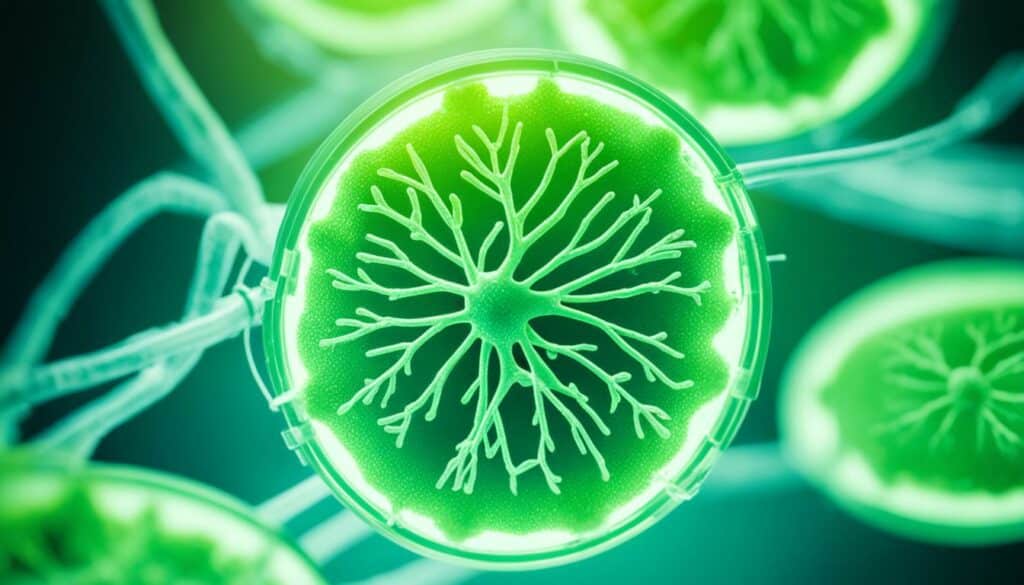
Marker-assisted selection is also shaking up plant breeding. It finds specific genes that make crops better. This method is more direct than older ways, using the plant’s genetic makeup to choose the best ones.
By using this method, we save a lot of time and work. This speeds up how fast we can breed new and superior crops.
New plant breeding techniques are key to boosting crop output and fighting off pests. This is crucial for the world’s growing need for food. by combining new and old breeding techniques, experts can achieve more.
Technologies that focus on the plants’ genes allow for making crops with exact traits. This is important for fighting climate change and pests, ensuring food for everyone.
Biotechnology helps make farming better for the environment. It uses new genetic and bioengineering methods. This can make farming more effective and reduce environmental harm.
Managing resources well is key in farming. With the world aiming to feed 9 billion people by 2030, we must do better. Crops like maize, rice, wheat, and soybean need to grow 2.4% every year. Biotechnology can help by creating plants that resist pests, diseases, and survive tough conditions.
Biotechnology helps farm more friendly to the planet. For example, it cuts down on the use of harmful chemicals by making plants pest-resistant, like insect-proof cotton. It also creates plants that can grow in dry or salty areas. These plants help keep the soil healthy and support various types of life.
| Crop | Yield Increase (per year) | Required Increase (per year) |
|---|---|---|
| Maize | 1.6% | 2.4% |
| Rice | 1.0% | 2.4% |
| Wheat | 0.9% | 2.4% |
| Soybean | 1.3% | 2.4% |
By combining sustainable farming with biotechnology, we get safe food for all. This method is good for the planet, farm-friendly, and financially smart. It draws from many fields like biology, engineering, and economics to grow better.
Biotech innovations are changing farming. They introduce new tools to improve how we grow crops. This includes making farming more productive, sustainable, and improving the quality of our food.
*Agricultural biotech innovations* are making big steps forward. They’ve brought us genetically modified crops like insect-resistant cotton. These crops reduce our need for chemical pesticides, helping the environment.
There are also herbicide-tolerant crops. These include soybeans, cotton, and corn. They’ve changed the way we manage weeds, allowing for safer herbicides. This is good for the environment and wildlife.

Research at places like the University of Pennsylvania shows the impact of *breakthrough biotech technologies*. Adding the GRP8 gene to plants makes them absorb nutrients better. This helps them survive in tough conditions.
*New biotech advances* go beyond just improving crop yields. They’ve helped create vaccines for animals, tackling diseases like foot and mouth and rabies. This shows how biotech can help in many different fields.
GM crops are becoming more popular worldwide. By 2017, almost 190 million hectares were used for GM crops. This highlights the recognised benefits of this technology. Major organisations like WHO and the National Academy of Sciences say GM crops are safe.
Moving forward, we need to think about the *ethical use* of these new agricultural technologies. It’s important that we balance progress with the well-being of our society and planet.
The table below offers a comprehensive overview of some of the key stats and breakthroughs in agricultural biotechnology:
| Category | Details |
|---|---|
| Percentage of Biotech Crop Plantings (2012, USA) | 88% Corn, 94% Cotton, 93% Soybeans |
| Global Area of Biotech Crops (2012) | Data estimated by ISAAA |
| Regulatory Approvals | 44 Countries, 40 GM Crops, 509 GM Events |
| Advancements Verified By | WHO, AMA, National Academy of Sciences, British Royal Society |
| Future Prospects | Enhanced Crop Quality, Sustainable Practices |
Biotechnology has changed farming by making crops more productive. It does this by making plants that fight off diseases and pests. This makes farming both sustainable and efficient.
Keeping crops safe from diseases is key to feeding people. Thanks to biotechnology, plants can now fight off many diseases. One example is how rice can now fight viral diseases. Making rice disease-resistant has also made it more nutritious.
Cotton and corn in the US are good examples too. In 2012, most of them were from biotech to fight off diseases. This shows how well biotechnology works in lowering losses and the use of harmful chemicals.
Dealing with pests is another big area where biotechnology shines. By making crops that bugs don”t like or that can survive weed killers, there”s less need for strong chemicals. In the US, a lot of cotton and soybeans are like this. These methods make farming simpler and safer for farmers.
They also cut the need for pesticides that can harm the environment. Using less harmful chemicals helps keep our water and land safe. This is important for all life and helps keep farming sustainable.
| Year | Crop | Biotech Adoption Rate |
|---|---|---|
| 2012 | Corn | 88% |
| 2012 | Cotton | 94% |
| 2012 | Soybeans | 93% |
Today, biotechnology is key in making crops better and safer. It fights diseases and pests in smart ways. This means more food and a greener, healthier world.
Biotechnology dramatically changed how we farm, especially by using less pesticides and improving soil health. This change has a big effect on the environment.

Engineered crops are vital in using fewer synthetic pesticides. In 2012, most U.S. corn, cotton, and soybean crops were biotech. They resist pests, which means less harmful chemicals are used. This cut in pesticide use protects water sources and the ecosystem.
Biotechnology also improves soil health. With fewer pesticides and more disease-resistant crops, the soil’s tiny life flourishes. This creates a richer, healthier soil. Healthy soil is key for farming to stay productive and to protect the environment.
The USDA and EPA carefully check if biotech crops harm different species. Thanks to these controls, we see crops like drought-resistant corn and wheat. These crops can handle different climates well. They help both the soil and the crops to grow better.
The agricultural biotech sector is about to change greatly, thanks to new biotech trends and farming innovations. A big change we’ve seen is the wide use of genetically engineered crops. In 2012, the U.S. had very high rates of using these crops. For example, 88% of corn, and 93% of soybeans. This shows how key biotechnology has become in farming, according to the USDA’s yearly reports.
Worldwide, in 2017, biotech crops covered 189.8 million hectares, according to the ISAAA. Many countries are relying more on biotech to make farming better. Biotechnology helps grow more food and of better quality. It has played a big role in fighting global hunger.
Transgenic research means crops now have more nutrients and are better at providing food. Soybeans are a great example. Scientists have made soybeans better by removing things that cause allergies. Now, these soybeans are very good for health. They’re rich in a type of protein that many people around the world need more of.
Also, rules have been changing to keep up with new biotech in farming. Now, 44 countries have said yes to 40 GM crops and 509 improvements. These include making plants able to handle weed killers, resist bugs, and be better in quality. Many big health and science groups say these crops are safe.
In my opinion, the future of farming is closely tied to new tech and practices. We’re at a point where these will change how we farm. This change will make farming better, more eco-friendly, and more successful.
Genetic engineering has changed how we farm and produce food. With advanced tools, we can boost the nutrient levels in crops. This helps fight malnutrition worldwide and meets the bigger food needs of more people.
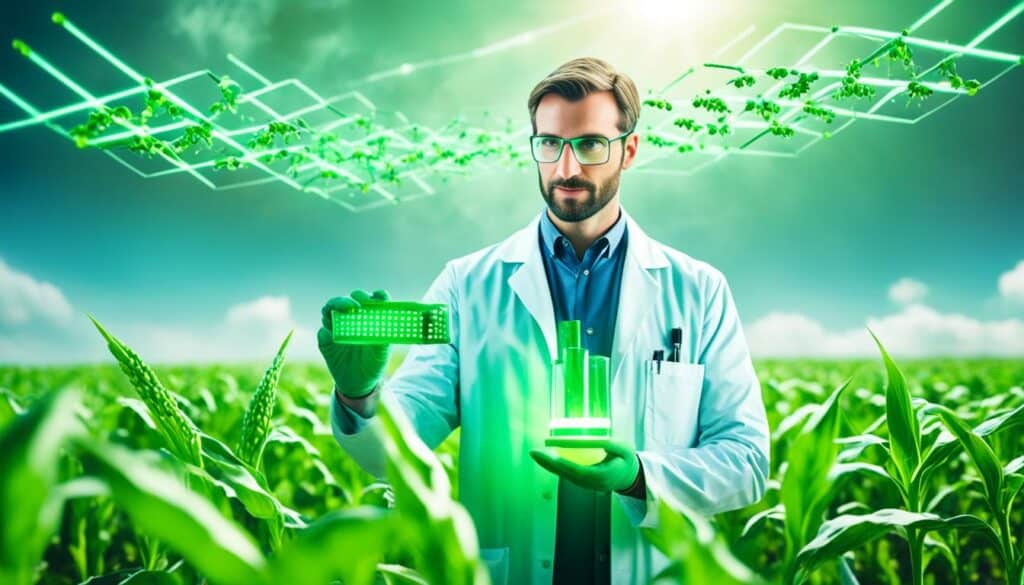
Some crops are designed to have more vitamins and minerals. This makes sure people get the right nutrients from their food. For example, Golden Rice fights Vitamin A deficiency. The USDA, EPA, and FDA check that these enhanced foods are safe and good for the environment.
Biofortification means making crops more nutritious. For example, we have crops rich in iron and zinc. Eating these foods helps combat nutrient deficiencies. Studies show they improve public health.
| Crop | Enhanced Nutrient | Health Benefit |
|---|---|---|
| Golden Rice | Vitamin A | Reduces vitamin A deficiency |
| Iron-Fortified Beans | Iron | Reduces anaemia |
| Zinc-Enriched Wheat | Zinc | Boosts immune function |
The future looks bright for genetic engineering in agriculture. We’ll see more advanced ways to make food healthier. This work is key to solving global nutrition problems and ensuring a better food future for everyone.
Biotechnology in agriculture has raised issues on safety and ethics. Examining how people see GMOs and the broad ethical questions is key. This helps us understand the debates fully.
Since their start, GMO crops and other bio-products have been debated. Many argue about their safety and effect on the Earth. People question if the authorities making calls on these risks think more of us or not.
In the 1990s and early 2000s, GMO plants faced severe criticism. This was over concerns about our and the planet’s health. Today, big biotech companies are working hard to improve their image. They aim to show how good these technologies can be, building more public trust in them.
The ethics of using biotech in farming touches on many topics. It includes messing with natural cycles, breaking with religious customs, and the rights of animals. The discussion centres around whether altering genes is like ‘playing God’. And if it fits with what’s morally right.
Biotech’s effect on farming communities is a big concern. The push towards GMO crops has sometimes led to farms going bankrupt. It also raises worries about a few big companies controlling too much. These are moral issues. Additionally, using biotech to better animal lives brings up questions about its role for people too.
It’s really important to address these ethical worries. Many suggest using the Precautionary Principle for situations that are unclear. They also think that labelling GMO products for shoppers to make informed choices is wise. Plus, there’s a big push for more meaningful talks between experts and the public to deal with these ethical challenges head-on.
In the end, agricultural bioethics needs a fair plan. It must ensure new technologies don’t damage the planet or our health. And it should respect everyone’s rights. Approaching biotech responsibly means putting safety and ethics first to deal with the public’s worries properly.
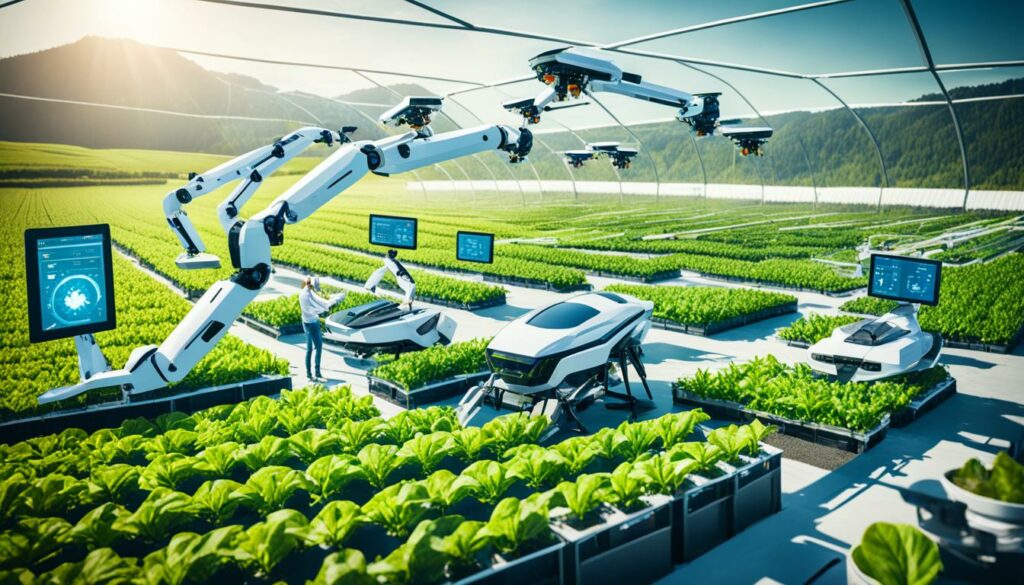
It’s key to look at how biotech affects agriculture economically. Using biotech in farming has brought big economic wins. This includes more crops and needing less chemicals.
Biotech in farming is mostly about getting more from each farm and spending less. The NASS says that by 2012, lots of corn, cotton, and soybeans in the U.S. were biotech. Farmers like this because it helps save money. For example, by using biotech cotton, they can lower their use of bad pesticides.
How well biotech crops do is linked to many things, like what’s happening around the world and laws. The ISAAA says there’s more biotech crops grown globally each year. This is because they help farmers make more money.
Also, the USDA checks how many farmers are using these biotech crops. This gives a good view of the market. Lots of work goes into making new crops that can fight off diseases and tough weather. This is to help with food in the future and fight climate change.
Biotechnology is poised to play a crucial role in addressing global food security challenges, promoting sustainable agricultural practices that align with environmental conservation goals.
A strong set of rules and guidelines is crucial for the agricultural biotech sector. Policies help keep a balance between new ideas and safety. Since 1986, a solid framework has been in place to manage biotechnology products.
Global standards are important for making rules that work everywhere. The U.S. has been adapting its rules to match the fast changes in biotechnology. It follows the advise from groups like the USDA-APHIS, EPA, and FDA.
The USDA-APHIS looks after products of biotechnology that might bring risks to plants. The EPA looks at the use of biotech-made pesticides. The FDA checks if food from genetic crops is safe according to national laws.
Each region has its own special rules for biotechnology products. The USDA-APHIS, for example, decides if some altered organisms don’t need regulation. This shows the ongoing work to fit biotech policies into the law, ensuring safety and protecting nature.
Genetically engineered crops are used worldwide. By 2019, they were growing in 29 countries and sold in 42 more. They are most popular in places like Latin America, Africa, and Asia.
| Region | Number of Countries Growing Biotech Crops |
|---|---|
| Latin America | 10 |
| Africa | 6 |
| North America | 2 |
| Europe | 2 |
| Asia | 9 |
There’s a big need for clear and effective biotech rules. With better cooperation between regulators, new innovations can easily fit in, making farming safer and greener everywhere.
Agricultural biotechnology is changing fast. Many new ideas will change how we keep our food safe and farming eco-friendly. Looking ahead, we see key trends that could transform farming. These changes could help overcome big issues around food and production.
New tech in farming will boost how much food we produce. A key breakthrough is tweaking soybeans to have more nutrients, vital for people and livestock. This shows why we need to watch tech trends in biotech. They lead to the next big things in farming tech.
The US is already using a lot of genetically modified crops. By 2012, they were planting batches of corn, cotton, and soybeans that were 88% to 94% modified. This shows we trust these biotech solutions in farming.
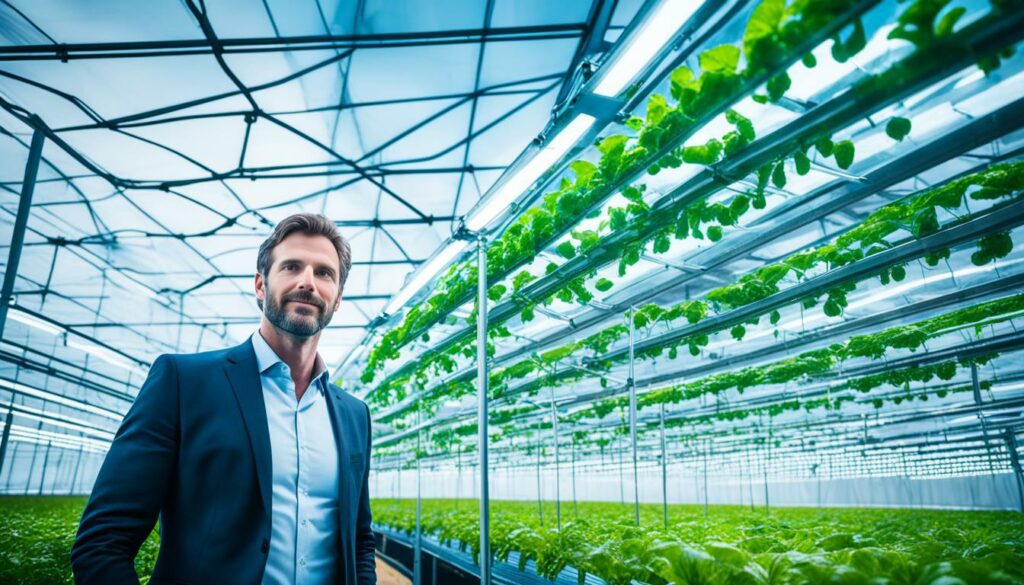
| Crop | Percentage of Biotechnology Plantings (2012) |
|---|---|
| Corn | 88% |
| Cotton | 94% |
| Soybeans | 93% |
New agri-tech could make a big difference in global food safety. Over 2 billion people don’t get enough vital nutrients. By improving crops, we could fight malnutrition worldwide.
The USDA and other organisations give important info about biotech crops. They show the benefits and growth of these crops. The ISAAA also provides info from around the world, showing that biotech crops have a global impact.
It’s crucial to watch out for new farming tech. By using these innovations, we can solve food and nutrition problems. This will create a stronger and more eco-friendly food system for everyone.
Our look into agricultural biotechnology shows how it’s changing the future of farming and food. Scientists are improving crops by making them more nutritious. They are doing this by changing their genes and figuring out which parts cause allergies, fixing those issues.
But there are problems to solve. Making these new techniques work for farmers worldwide is tough. They must fit the different ways crops are grown. For example, while making crops that need less work can help in places like India, it might hurt the women who work there the most.
Using these new technologies can also bring changes to how we work and the economy. We need to think about the impact on jobs too. As rules and markets change, we must make sure farming stays good for the planet. These techs can also help in healthcare and cleaning up the environment. So, they’re really about more than just making food better.
Advancements in genetically modified crops, along with sustainable farming, are key trends.
The use of CRISPR gene editing and other new plant breeding methods is also rising.
From simple cross-breeding, the field has now progressed to genetic engineering.
This includes studying genes to make crops better against pests and diseases.
Biotech helps make crops stronger against diseases and pests. It also increases crop output.
Additionally, it’s making crops resistant to tough environmental conditions, such as droughts.
Genetically modified crops mean more food, less pesticide use, and tougher plants.
Yet, people worry about their safety, the rules to make them, and their effect on nature.
CRISPR and marker selection are changing agriculture by making targeted plant changes.
These lead to crops with better disease-fighting power, more food, and healthier nutrition, faster than before.
Biotechnology helps use resources better and care for the environment.
It makes crops that need less water and fewer fertilisers, which is good for the planet.
New techniques include use of synthetic biology, nano tools for more effective nutrients and pesticides delivery, and AI for smarter farming management.
These are making agriculture more advanced and efficient.
It boosts crop yields by making them fight diseases and pests better.
Furthermore, it creates plants that can grow well even in tough places.
Biotechnology farming uses less pesticide, which is better for water and nature.
It also needs fewer water and fertilisers, protecting our environment and keeping the soil healthy.
In the future, we will see stronger, nutrient-rich crops and smarter farming.
Digital and precision agriculture will grow, helping feed the world in a more sustainable way.
Through genetic engineering, crops are being made with more vitamins and minerals.
This aims to fight malnutrition and make people healthier.
Keeping GMOs safe to eat, checking their effect on the environment, and dealing with what people think are big issues.
It’s important to always study and control these crops to keep them safe and right.
Big gains can come from these new farming practices, making farms more profitable.
Also, they change how markets work and help start new farming business areas.
Rules and policies set the stage for how biotech in farming is developed and sold.
International and local rules make sure new farming methods are safe and work well.
The future will bring more genetic work, more digital farming, and crops that suit special needs.
This will help make sure we have enough food and farm in a way that’s better for the planet.